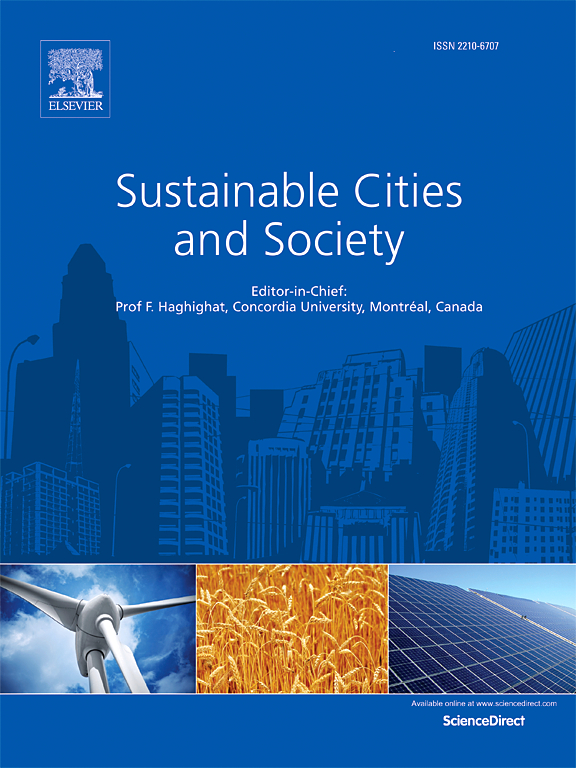Optimizing productive green roofs for urban food self-sufficiency in Amsterdam
IF 10.5
1区 工程技术
Q1 CONSTRUCTION & BUILDING TECHNOLOGY
引用次数: 0
Abstract
Fulfilling urban dietary demand often hinges on importing food from rural areas, leaving the local food supply chain and food security vulnerable to disruptions. Productive green roofs have the potential to partially address this challenge by supplying food locally and therefore mitigating sudden disruptions in the urban food supply chain. However, increasing urban food self-sufficiency requires an understanding of urban food production potential and the optimal planting structures for crop rotation planning. In this study, we modeled various crop rotations spatially and temporally to assess the potential for urban productive green roof food production to meet the local dietary demand of specific crop groups. We estimated urban food self-sufficiency considering average productive green roof crop yields and climatic variability (2003–2021) within the city of Amsterdam. We find that Amsterdam's potential productive green roofs can achieve urban food self-sufficiency of 52 % for selected crops (41–54 % when accounting for climatic and spatial variability). When optimizing the planting structure, this number rises to 71 % (50–71 %). Our results highlight that productive green roofs in Amsterdam have the potential to strengthen the local food supply chain, especially if a strategic approach to the planting structure is adopted.
求助全文
约1分钟内获得全文
求助全文
来源期刊

Sustainable Cities and Society
Social Sciences-Geography, Planning and Development
CiteScore
22.00
自引率
13.70%
发文量
810
审稿时长
27 days
期刊介绍:
Sustainable Cities and Society (SCS) is an international journal that focuses on fundamental and applied research to promote environmentally sustainable and socially resilient cities. The journal welcomes cross-cutting, multi-disciplinary research in various areas, including:
1. Smart cities and resilient environments;
2. Alternative/clean energy sources, energy distribution, distributed energy generation, and energy demand reduction/management;
3. Monitoring and improving air quality in built environment and cities (e.g., healthy built environment and air quality management);
4. Energy efficient, low/zero carbon, and green buildings/communities;
5. Climate change mitigation and adaptation in urban environments;
6. Green infrastructure and BMPs;
7. Environmental Footprint accounting and management;
8. Urban agriculture and forestry;
9. ICT, smart grid and intelligent infrastructure;
10. Urban design/planning, regulations, legislation, certification, economics, and policy;
11. Social aspects, impacts and resiliency of cities;
12. Behavior monitoring, analysis and change within urban communities;
13. Health monitoring and improvement;
14. Nexus issues related to sustainable cities and societies;
15. Smart city governance;
16. Decision Support Systems for trade-off and uncertainty analysis for improved management of cities and society;
17. Big data, machine learning, and artificial intelligence applications and case studies;
18. Critical infrastructure protection, including security, privacy, forensics, and reliability issues of cyber-physical systems.
19. Water footprint reduction and urban water distribution, harvesting, treatment, reuse and management;
20. Waste reduction and recycling;
21. Wastewater collection, treatment and recycling;
22. Smart, clean and healthy transportation systems and infrastructure;
 求助内容:
求助内容: 应助结果提醒方式:
应助结果提醒方式:


